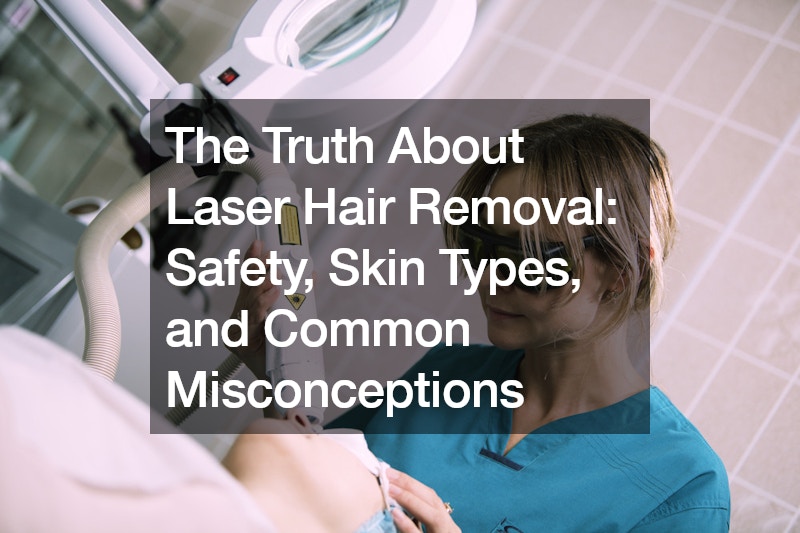Laser hair removal has become one of the most sought-after cosmetic procedures in beauty salons and clinics, with individuals eager to achieve long-term hair reduction. As the popularity of this treatment continues to rise, it’s crucial to address common questions and misconceptions surrounding laser hair removal to ensure individuals make informed decisions about their beauty and skincare routines.
To begin, it’s essential to understand the science behind laser technology. Laser, an acronym for "light amplification by stimulated emission of radiation," differs from regular light due to its single wavelength, forming a focused and precise beam.
This unique characteristic allows for the targeted delivery of high-energy to specific areas. However, it’s important to note that not all hair removal procedures labeled as "laser" use actual laser technology; some employ Intense Pulsed Light (IPL), which scatters light energy in various directions.
The effectiveness of laser hair removal is influenced by skin and hair types. Traditionally, individuals with pale skin and dark hair were considered ideal candidates due to the high contrast between hair and skin. However, advancements in technology have made laser hair removal safe for darker skin tones as well, provided the right type of laser is used. The Nd:YAG laser, emitting a wavelength of 1064 nanometers, is considered safer for darker skin types as it bypasses surface melanin and targets melanin deep within the follicle.
Despite concerns about hyperpigmentation and burns, proper measures can minimize risks. Cooling the skin during the procedure, conducting test patches, and using lower energy settings than recommended by the manufacturer can enhance safety for individuals with darker skin.
Understanding how laser hair removal works is crucial for individuals considering the procedure. The process involves directing laser energy onto the skin, where the melanin in the hair absorbs the light, heating up and destroying the hair follicle. This prevents new hair growth or results in slower and thinner growth. While effective, the treatment is best suited for individuals with brown or black hair due to the laser’s greater absorption by eumelanin, the dark pigment.
Common misconceptions about laser hair removal include fears of infertility and skin cancer. However, it’s essential to debunk these myths. Laser hair removal only targets the dermis, where hair follicles are situated, and poses no risk to internal organs or reproductive systems. Moreover, there is no evidence linking laser hair removal to skin cancer; certain lasers are even used to treat pre-cancerous skin lesions.
The treatment’s effectiveness is influenced by the hair growth cycle, leading to the necessity of multiple sessions. Hair goes through growth phases, with only actively growing hair in the anagen phase being susceptible to laser treatment. As a result, achieving a significant hair reduction requires targeting hairs in this specific phase across multiple sessions.
Individuals may wonder if the treatment is permanent. While laser hair removal can significantly reduce hair growth, it doesn’t guarantee permanent removal. Factors such as hormonal changes during pregnancy, polycystic ovarian syndrome, or menopause can influence hair growth, requiring maintenance sessions to sustain results.
As the popularity of at-home laser devices grows, it’s crucial to recognize their differences from professional clinic devices. At-home devices, often using IPL, are less powerful and effective, necessitating more sessions. It’s essential to follow manufacturer instructions, use provided eye protection, and be aware that not all devices are suitable for all skin types.
Laser hair removal’s applicability to various skin conditions is another point of consideration. Conditions like psoriasis, dermatographism, and sensitive skin may require additional precautions or suitability checks before undergoing the procedure. For instance, sensitive skin may react with temporary redness or swelling, which can be managed with ice packs or hydrocortisone.
Preparation is crucial for the success and safety of laser hair removal treatments. To optimize results and minimize risks, individuals should avoid certain hair removal methods like waxing or tweezing in the weeks leading up to the procedure, as these can interfere with the laser’s effectiveness. Shaving is recommended as it preserves the hair shaft. Sun exposure and tanning should also be avoided to prevent complications such as burns or hyperpigmentation. Regular use of sunscreen is advisable. Proper skincare, including gentle cleansers and moisturizers, helps maintain skin health and reduces the risk of adverse reactions, especially for those with sensitive skin.
In conclusion, laser hair removal is a widely sought-after procedure for achieving long-term hair reduction. Beauty salons and clinics offer this treatment with advancements in technology making it safe for various skin types. By debunking common myths and understanding the science behind laser hair removal, individuals can make informed decisions about their skincare routines and expectations. It’s essential to consider individual factors, follow pre- and post-treatment care instructions, and choose reputable practitioners to ensure a safe and effective experience.
.


